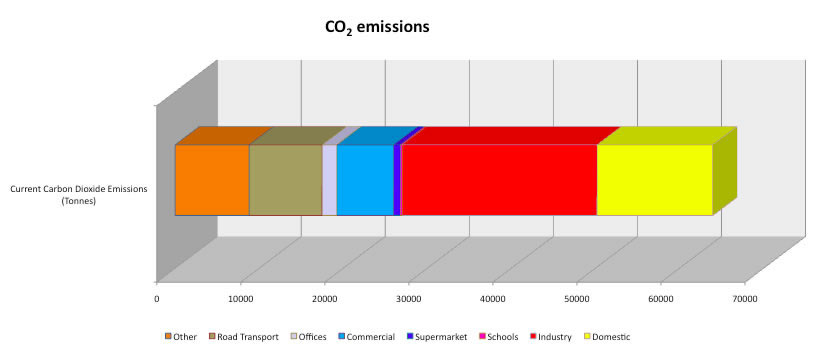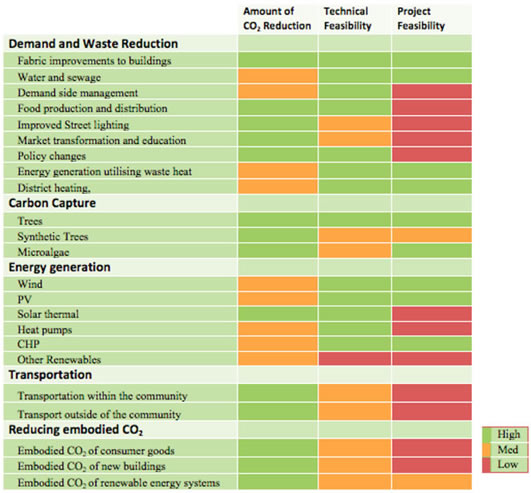It is nearly impossible to accurately measure the carbon footprint of a community, instead it is better to estimate both the current emissions and the potential savings that can be made. A literature review highlighted that definitions of carbon neutral often vary considerably, with some definitions taking into account fewer factors than others. It is certainly easier for a community to become carbon neutral if the definition of their carbon footprint does not take into account factors such as air travel or consumer goods purchased from abroad.
The carbon footprint of the project area has been estimated based on an average figure of 10 tonnes of CO2 per person in Scotland. The definition includes factors such as food, energy use, commerce and infrastructure. The footprint has been adjusted for the community of Dennistoun by replacing the estimated industrial and domestic emissions with the values calculated from the electricity and gas consumption in the area, which was calculated in the initial investigations [link]. The emissions from road transport have also been adjusted by using average emissions from road transport for Glasgow and reducing them by 20%. It was felt that, as an inner-city community within walking distance of the city centre and with good public transport links, the emissions from road transport would be lower than in other parts of the city so this arbitrary 20% reduction was made. It would be important to carry out further investigations to assess if this is a reasonable assumption; however, it was felt that this was beyond the scope of this project. Based on these assumptions, the community of Dennistoun, with a population of 7000 people, would have an estimated carbon footprint of 64,000 tonnes of CO2 per year.
The contribution from aviation and imported consumer goods are estimated at 0.67 and 0.72 tonnes per person respectively . However, it was felt that more investigation would be required to assess the accuracy of these figures for the community of Dennistoun. As a result, these contributions have not been included in calculations of CO2 savings but should not be ignored.

Figure 1: Carbon emission contributions for the Dennistoun area
Following an analysis of the energy use of the area, it was decided to focus on certain priority areas that could have the biggest impact on the emissions of the community. Figure 1 shows a breakdown of where the CO2 emissions from the area come from. The electricity and gas consumption of the large industry and residential sections of the community were identified as major contributors to the emissions of the area, and it was decided to focus on reducing these emissions.
It was decided to focus on the emissions that could most easily be affected by the community. It was felt that transportation would require broader changes to both policy and the development of new technologies that are outside the control of the community. As such, it was seen to be more realistic to focus on electricity and heat consumption in the area.
By limiting the investigation to certain areas of investigation, clearly it will not be possible to create a net zero carbon community; however, due to the limited timescale of the project, it was felt that it would be more realistic to focus on certain areas to make the largest possible reduction in emissions.
The project focuses on demand reduction, renewable energy systems, energy from waste, and carbon capture and sequestration. Table 1 outlines the selection criteria in more detail that was applied to the selection of areas of investigation.

Table 1: Analysis of areas of investigation for the project